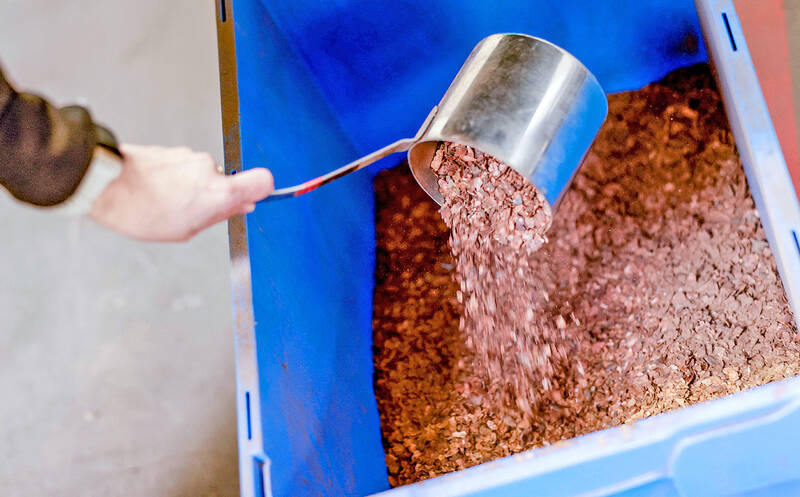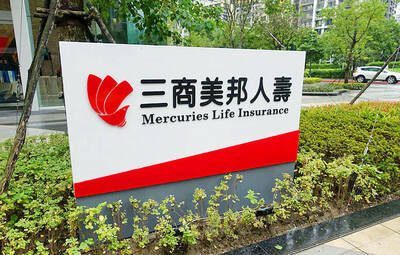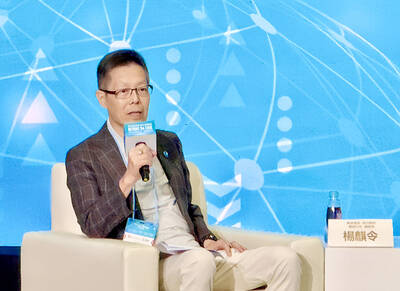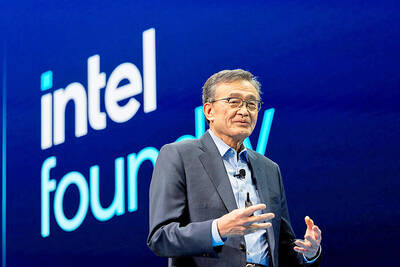At a red-brick factory in the German port city of Hamburg, cocoa bean shells go in one end and out the other comes an amazing black powder with the potential to counter climate change.
The substance, dubbed biochar, is produced by heating the cocoa husks in an oxygen-free room to 600°C.
The process locks in greenhouse gases and the final product can be used as a fertilizer, or as an ingredient in the production of “green” concrete.

Photo: AFP
While the biochar industry is still in its infancy, the technology offers a novel way to remove carbon from the Earth’s atmosphere, experts have said.
Biochar could potentially be used to capture 2.6 billion of the 40 billion tonnes of carbon dioxide produced by humans each year, the UN’s Intergovernmental Panel on Climate Change (IPCC) said.
However, scaling up its use remains a challenge.
“We are reversing the carbon cycle,” Circular Carbon chief executive officer Peik Stenlund told reporters at the biochar factory in Hamburg.
The plant, one of the largest in Europe, takes delivery of the used cocoa shells via a network of gray pipes from a neighboring chocolate factory.
The biochar traps the carbon dioxide contained in the husks — in a process that could be used for any other plant.
If the cocoa shells were disposed of as normal, the carbon inside the unused byproduct would be released into the atmosphere as it decomposed.
Instead, the carbon is sequestered in the biochar “for centuries,” said David Houben, an environmental scientist at the UniLaSalle Institute in France.
One tonne of biochar — or bio coal — can stock “the equivalent of 2.5 to 3 tonnes of CO2,” Houben told reporters.
Biochar was already used by indigenous populations in the Americas as a fertilizer before being rediscovered in the 20th century by scientists researching extremely fecund soils in the Amazon basin.
The surprising substance’s sponge-like structure boosts crops by increasing the absorption of water and nutrients by the soil.
In Hamburg, the factory is wrapped in the faint smell of chocolate and warmed by the heat given off by the installation’s pipework.
The final product is poured into white sacks to be sold to local farmers in granule form.
The production process, called pyrolysis, also produces biogas, which is resold to the neighboring factory. In all, 3,500 tonnes of biochar and “up to 20 megawatt-hours” of gas are produced by the plant each year from 10,000 tonnes of cocoa shells, the plant said.
The production method remains difficult to scale up to the level imagined by the IPCC.
“To ensure the system stores more carbon than it produces, everything needs to be done locally, with little or no transport. Otherwise it makes no sense,” Houben said.
Not all types of soil are well-adapted to biochar.
The fertilizer is “more effective in tropical climates,” while the raw materials for its production are not available everywhere, Houben said.
The cost can also be prohibitive at "around 1,000 euros [US$1,072] a tonne — that's too much for a farmer," he added.
To make better use of the powerful black powder, Houben said other applications would need to be found.
The construction sector, for example, could use biochar in the production of "green" concrete.
However, to turn a profit, the biochar business has come up with another idea: selling carbon certificates.
The idea is to sell certificates to companies looking to balance out their carbon emissions by producing a given amount of biochar.
With the inclusion of biochar in the highly regulated European carbon certificates system, "we are seeing strong growth in [the] sector," Stenlund said.
His company is looking to open three new sites to produce more biochar in the coming months.

Mercuries Life Insurance Co (三商美邦人壽) shares surged to a seven-month high this week after local media reported that E.Sun Financial Holding Co (玉山金控) had outbid CTBC Financial Holding Co (中信金控) in the financially strained insurer’s ongoing sale process. Shares of the mid-sized life insurer climbed 5.8 percent this week to NT$6.72, extending a nearly 18 percent rally over the past month, as investors bet on the likelihood of an impending takeover. The final round of bidding closed on Thursday, marking a critical step in the 32-year-old insurer’s search for a buyer after years of struggling to meet capital adequacy requirements. Local media reports

TECHNOLOGICAL RIVALRY: The artificial intelligence chip competition among multiple players would likely intensify over the next two years, a Quanta official said Quanta Computer Inc (廣達), which makes servers and laptops on a contract basis, yesterday said its shipments of artificial intelligence (AI) servers powered by Nvidia Corp’s GB300 chips have increased steadily since last month, should surpass those of the GB200 models this quarter. The production of GB300 servers has gone much more smoothly than that of the GB200, with shipments projected to increase sharply next month, Quanta executive vice president Mike Yang (楊麒令) said on the sidelines of a technology forum in Taipei. While orders for GB200 servers gradually decrease, the production transition between the two server models has been

US sports leagues rushed to get in on the multi-billion US dollar bonanza of legalized betting, but the arrest of an National Basketball Association (NBA) coach and player in two sprawling US federal investigations show the potential cost of partnering with the gambling industry. Portland Trail Blazers coach Chauncey Billups, a former Detroit Pistons star and an NBA Hall of Famer, was arrested for his alleged role in rigged illegal poker games that prosecutors say were tied to Mafia crime families. Miami Heat guard Terry Rozier was charged with manipulating his play for the benefit of bettors and former NBA player and

BETTER THAN EXPECTED: The firm’s Q3 results exceeded its projections, based on ‘the underlying strength of our core markets,’ chief financial officer Dave Zinsner said Intel Corp returned to profitability and gave an upbeat revenue forecast after PC demand grew, suggesting that it is making progress on a long and challenging comeback attempt. In the third quarter, revenue rose 3 percent to US$13.7 billion. The Santa Clara, California-based company posted its first quarterly net income since the end of 2023, with earnings per share of US$0.23, excluding some items. Analysts had estimated sales of US$13.2 billion and earnings per share of US$0.01 on average, according to data compiled by Bloomberg. Fourth-quarter sales would be roughly US$13.3 billion, the company said in a statement on Thursday. Intel shares gained about